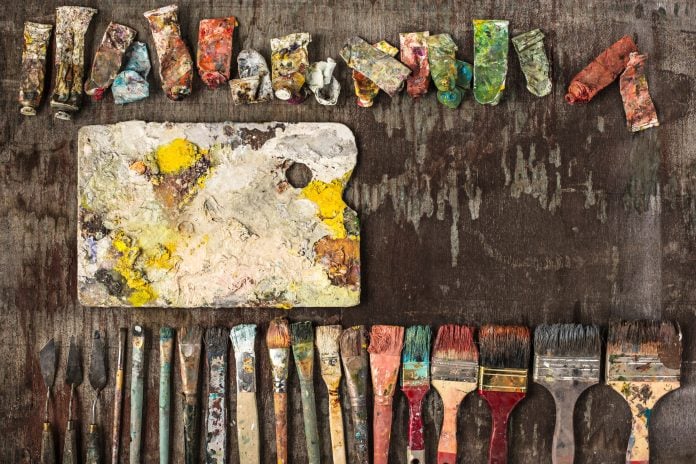Key Takeaways
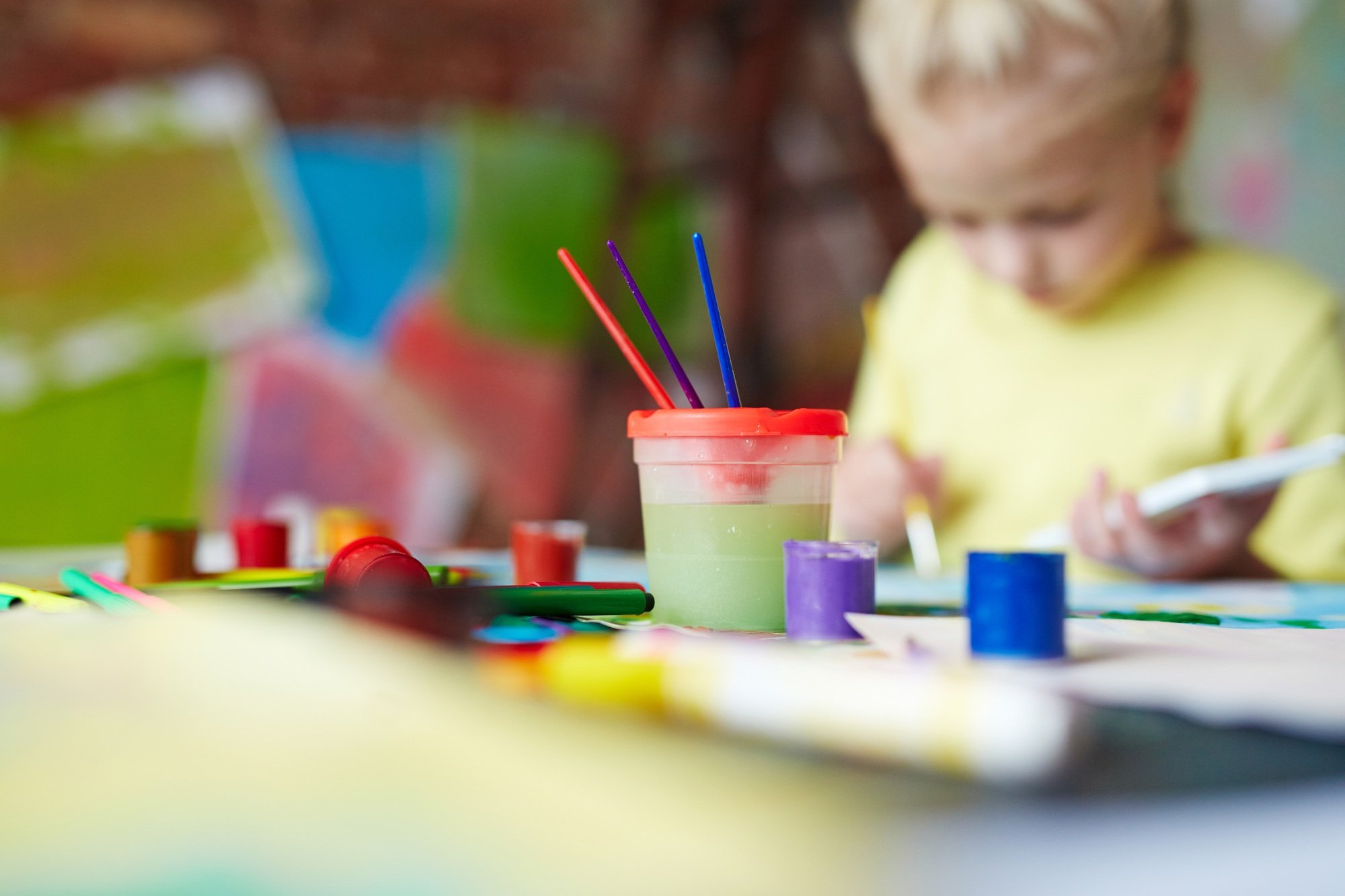
- Understanding Essential Tools: Familiarize yourself with key painting equipment such as brushes, paints, and canvases that suit various artistic styles and techniques.
- Brush Selection: Choose the right type of brush for your project; flat, round, filbert, and fan brushes each serve unique purposes for different painting effects.
- Quality Paint Matters: Opt for high-quality paints—acrylic, oil, or watercolor—depending on your project’s requirements to ensure vibrant and lasting results.
- Foundation with Canvases: Select the appropriate canvas type, such as stretched canvases, canvas panels, or wood panels, to support the mediums you’re using.
- Maintenance is Key: Regularly clean and store your painting equipment properly to extend its lifespan and maintain performance, ultimately enhancing the quality of your work.
- Investing in Equipment: Prioritize quality over quantity when selecting painting tools, as durable equipment can significantly elevate your artistic output and customer satisfaction.
Whether you’re a seasoned artist or just starting out, having the right painting equipment can make all the difference in your creative journey. From brushes to canvases and everything in between, each tool plays a crucial role in bringing your vision to life. Understanding what’s available and how to choose the best options for your style can elevate your artwork to new heights.
In this guide, you’ll discover essential painting supplies that cater to various techniques and mediums. You’ll learn how to select the right brushes for different effects, the importance of quality paints, and the benefits of investing in durable canvases. With the right equipment at your fingertips, you’ll unlock your full artistic potential and create stunning masterpieces that reflect your unique voice.
Overview of Painting Equipment

Painting requires specific equipment to achieve professional results. Whether you’re a small business owner or an artist, understanding essential tools enhances your projects and boosts your creative output.
Brushes
Quality brushes are vital for any painting project. Choose brushes based on the technique you plan to execute. Consider the following types:
- Flat Brushes: Great for broad strokes and coverage.
- Round Brushes: Ideal for detailed work and fine lines.
- Filbert Brushes: Versatile for both detailed and broader strokes.
- Fan Brushes: Perfect for texture and foliage effects.
Paints
Selecting the right paint impacts the vibrancy and longevity of your artwork. Key options include:
- Acrylic Paint: Fast-drying and versatile, suitable for various surfaces.
- Oil Paint: Offers rich color but requires longer drying times.
- Watercolor Paint: Excellent for transparent washes and delicate effects.
Canvases
Quality canvases provide a solid foundation for your artwork. When selecting canvases, consider:
- Stretched Canvases: Ready-to-use and ideal for oils and acrylics.
- Canvas Panels: Lightweight and portable for easy transport.
- Wood Panels: More rigid, suitable for mixed media and oil paints.
Other Equipment
In addition to brushes, paints, and canvases, several other tools enhance the painting experience, such as:
- Palettes: Useful for mixing and organizing colors.
- Easels: Stabilizing your canvas and improving your posture while you work.
- Rags and Water Containers: Necessary for cleaning brushes and maintaining workspace cleanliness.
By investing in quality painting equipment, you elevate your artistic potential and solidify your standing in the small business market.
Types of Painting Equipment

Choosing the right painting equipment can significantly impact the quality of your artwork, whether you’re operating a small business or pursuing a creative hobby. Here’s a breakdown of essential painting tools:
Brushes
Brushes are crucial for various painting tasks, particularly when precision is required. Selecting the right brush can set your small business apart.
Types of Bristles
- Natural-Bristle Brushes: These brushes, made from animal hair, excel with oil-based or alkyd paints. Hog hair brushes are a common choice for these applications, providing durability and flexibility.
- Synthetic Brushes: Constructed from nylon or polyester, synthetic brushes work well with both oil and latex paints. These brushes offer versatility and maintain their shape over time, making them suitable for various techniques.
Brush Shapes
- Flat Shapes: Flat shaders, filbert, and wash brushes fill large areas efficiently, create straight lines, and help blend colors seamlessly.
- Round Shapes: Round brushes, including liner and quill, are ideal for detail work and thicker strokes, allowing for intricate designs.
Rollers
Rollers are effective for covering large surfaces quickly, which benefits your workflow in a small business.
- Standard Rollers: These are designed for applying paint evenly on walls and ceilings, providing a clean finish for larger projects.
- Mini Rollers: Mini rollers are perfect for tight spaces and detailed work, ensuring you reach every corner without sacrificing quality.
Sprayers
Sprayers offer an efficient method for applying paint, especially for detailed or large-scale jobs.
- Airless Sprayers: These sprayers work by pushing paint through a high-pressure system, allowing for smooth application on various surfaces. They’re ideal for large exterior projects or quick interior jobs.
- HVLP Sprayers: High Volume Low Pressure sprayers use a different technique to minimize overspray, making them suitable for delicate projects and smaller areas. This precision helps maintain the quality of your work while saving time.
Ensuring you have the right painting equipment supports your efforts in running a small business effectively, promoting higher customer satisfaction and repeat sales.
Choosing the Right Painting Equipment
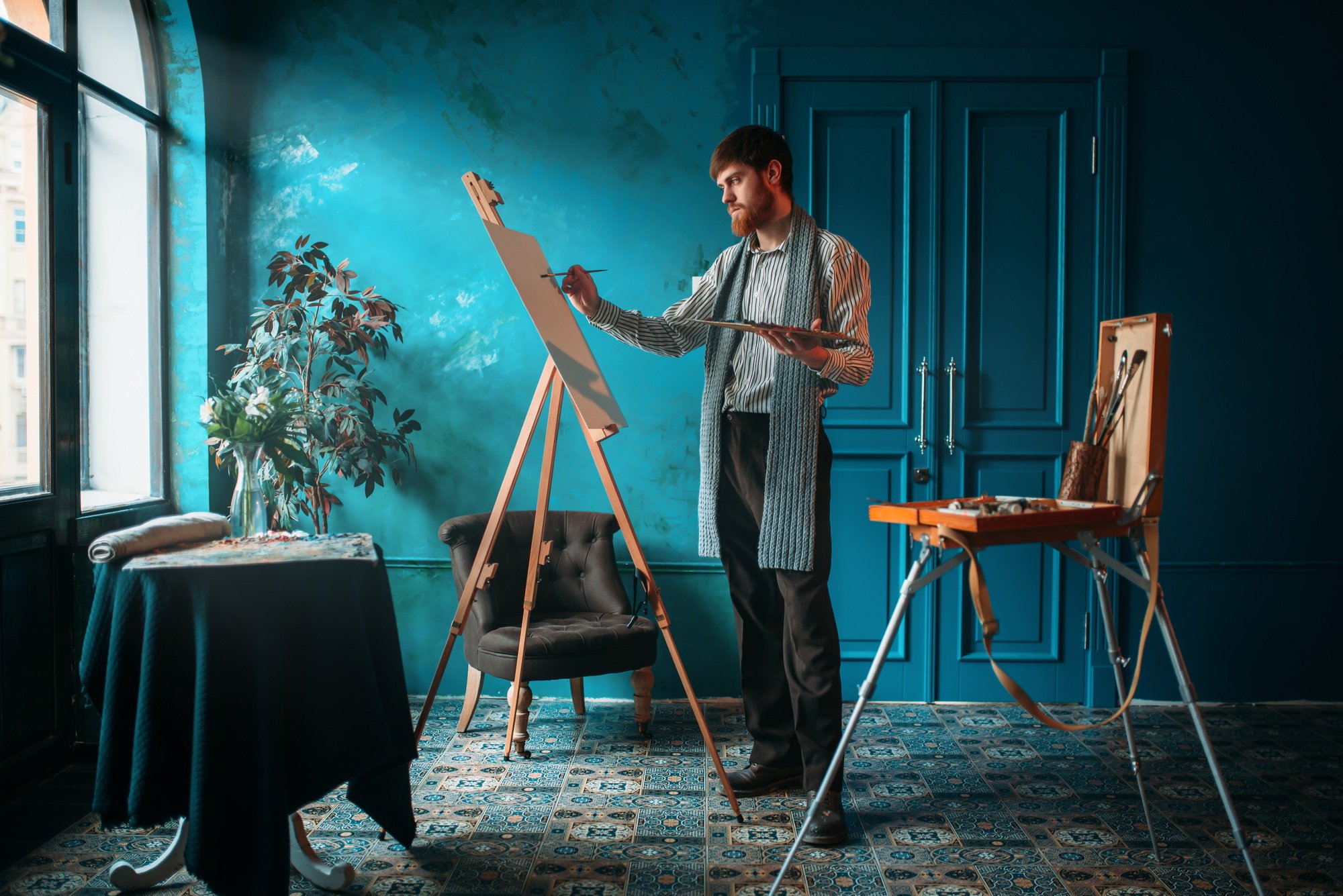
Selecting the right painting equipment is crucial for achieving the best results in your painting projects. For small business owners, the choice of tools can influence both the quality of your work and customer satisfaction.
Factors to Consider
Evaluate several factors before choosing painting equipment.
- Purpose and Object of Use: Different painting jobs, such as automobile painting, furniture painting, or industrial product painting, require specific equipment. For fine art, high-precision spray guns work best, while larger industrial projects benefit from powerful spray systems.
- Types of Spray Painting Techniques: Understand various spray painting technologies. Pneumatic spray painting suits delicate finishes, while airless spray painting allows rapid coverage over expansive surfaces. Assess your project’s specific needs to ensure you select the appropriate technique.
- Quality of Tools: Invest in high-quality equipment. Quality tools enhance durability and efficiency, leading to better results and potentially higher customer satisfaction.
Brand Comparisons
Research reputable brands in the painting equipment market. Well-known brands usually offer reliable warranties and customer support, vital for small business operations. Compare features such as ease of use, maintenance requirements, and availability of replacement parts. Brands with a strong reputation in the industry often provide superior performance and longevity, essential for building a reliable service in your small business.
Choose your painting equipment carefully to enhance your work and provide excellent service to your customers.
Maintenance of Painting Equipment
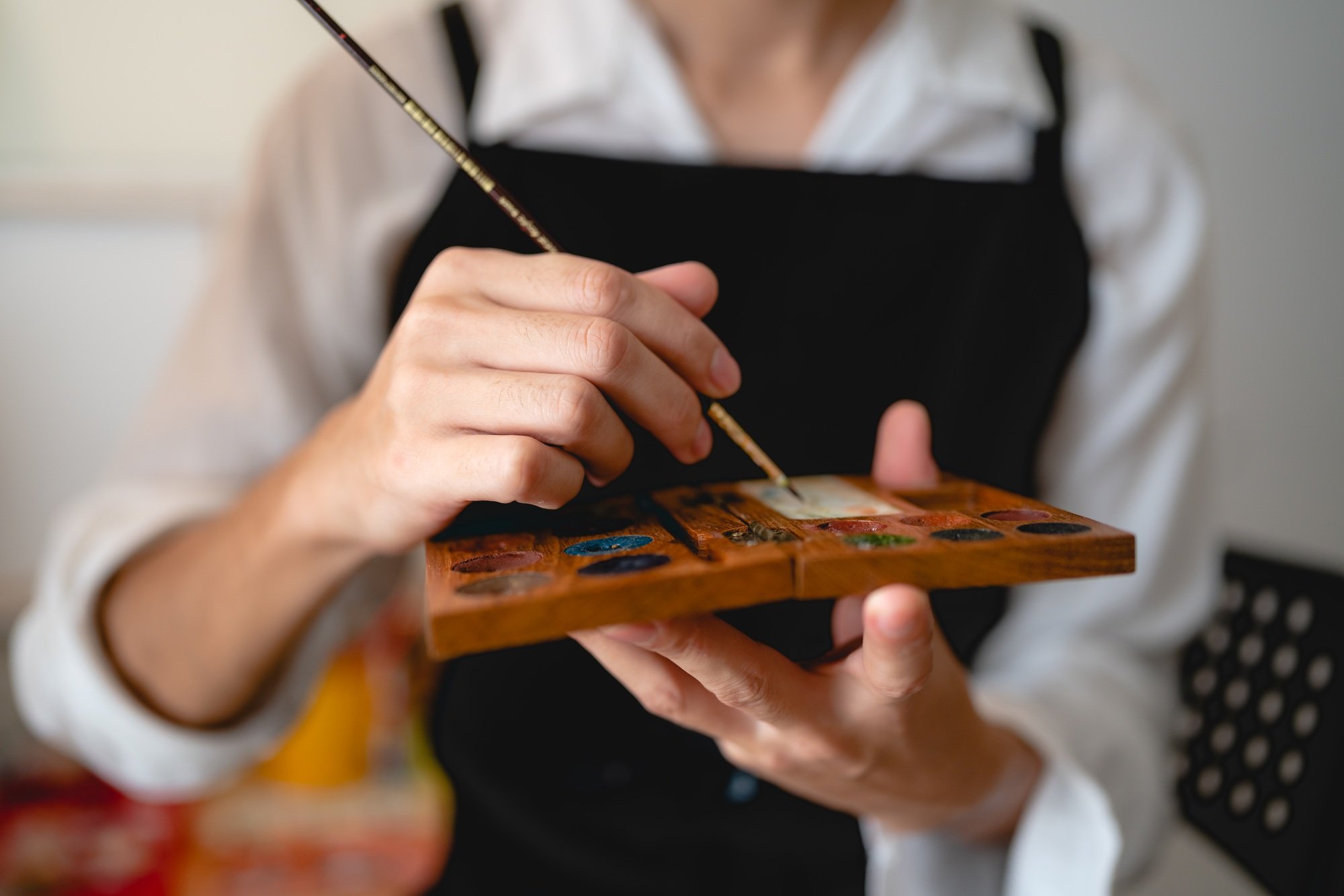
Maintaining your painting equipment ensures longevity and effectiveness. Proper care not only saves you money but also enhances the quality of your work, crucial for running a small business effectively.
Cleaning Techniques
Cleaning painting tools properly prolongs their usability and maintains performance:
Brushes:
- Clean brushes for water-based paints by rinsing them under warm water.
- Use a brush comb or an old fork to dislodge trapped paint.
- Wash with warm water and mild soap.
- Rinse thoroughly, shake off excess water, reshape bristles, and let air dry flat or hanging.
- For oil-based paints, rinse the brush with a suitable solvent followed by soap and water.
- Ensure all solvent and soap remove completely before drying.
Rollers:
- Remove excess paint using a roller scraper or a putty knife.
- For water-based paints, rinse the roller under warm water, using your hands to work the paint out.
- For oil-based paints, use a solvent and change solvent trays as needed until clean.
- Rinse with water to eliminate residual solvent and let air dry.
Storage Tips
Storing your painting equipment properly preserves its condition and accessibility:
- Store brushes upright in a container to maintain bristle shape.
- Wrap rollers in plastic to keep them moist if not used for an extended period.
- Keep all equipment in a dry, temperature-controlled area to prevent degradation.
- Organize tools by type in labeled containers or drawers for easy access during paint jobs.
- Regularly inspect equipment for wear and replace as necessary to maintain quality.
Taking these steps ensures your painting tools function optimally, enhancing your business’s efficiency and the quality of your final products.
Conclusion
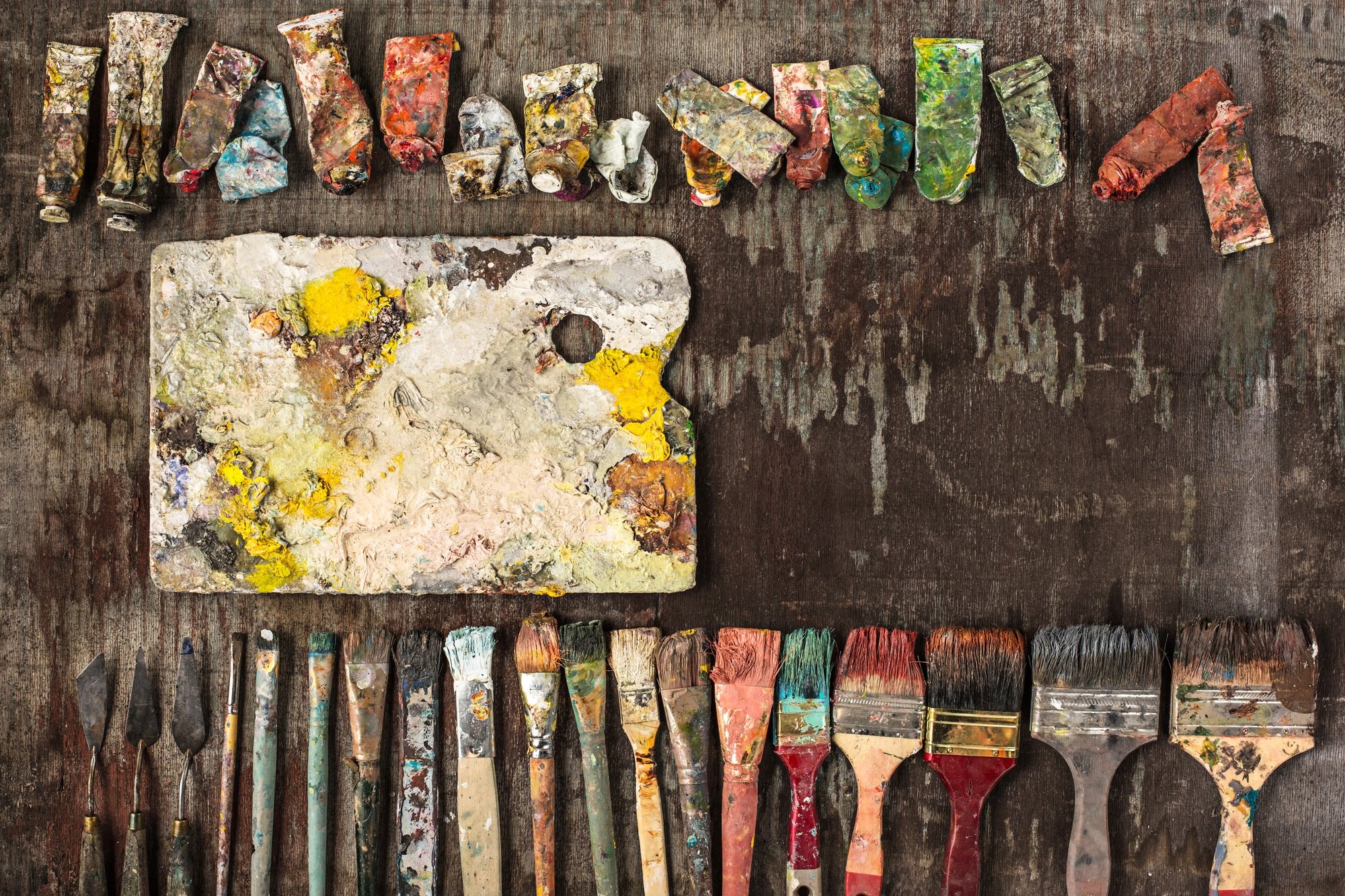
Investing in the right painting equipment is essential for both artistic expression and business success. Quality tools not only enhance your creativity but also improve the overall outcome of your work. By understanding the specific functions of brushes, paints, and canvases, you can make informed choices that align with your artistic vision.
Regular maintenance of your tools ensures they remain effective and durable, which is crucial for maintaining efficiency in your business. As you continue to refine your skills and expand your offerings, remember that the right equipment can elevate your art and satisfy your customers. Embrace the journey of discovery in painting, and watch as your unique style flourishes.
Frequently Asked Questions
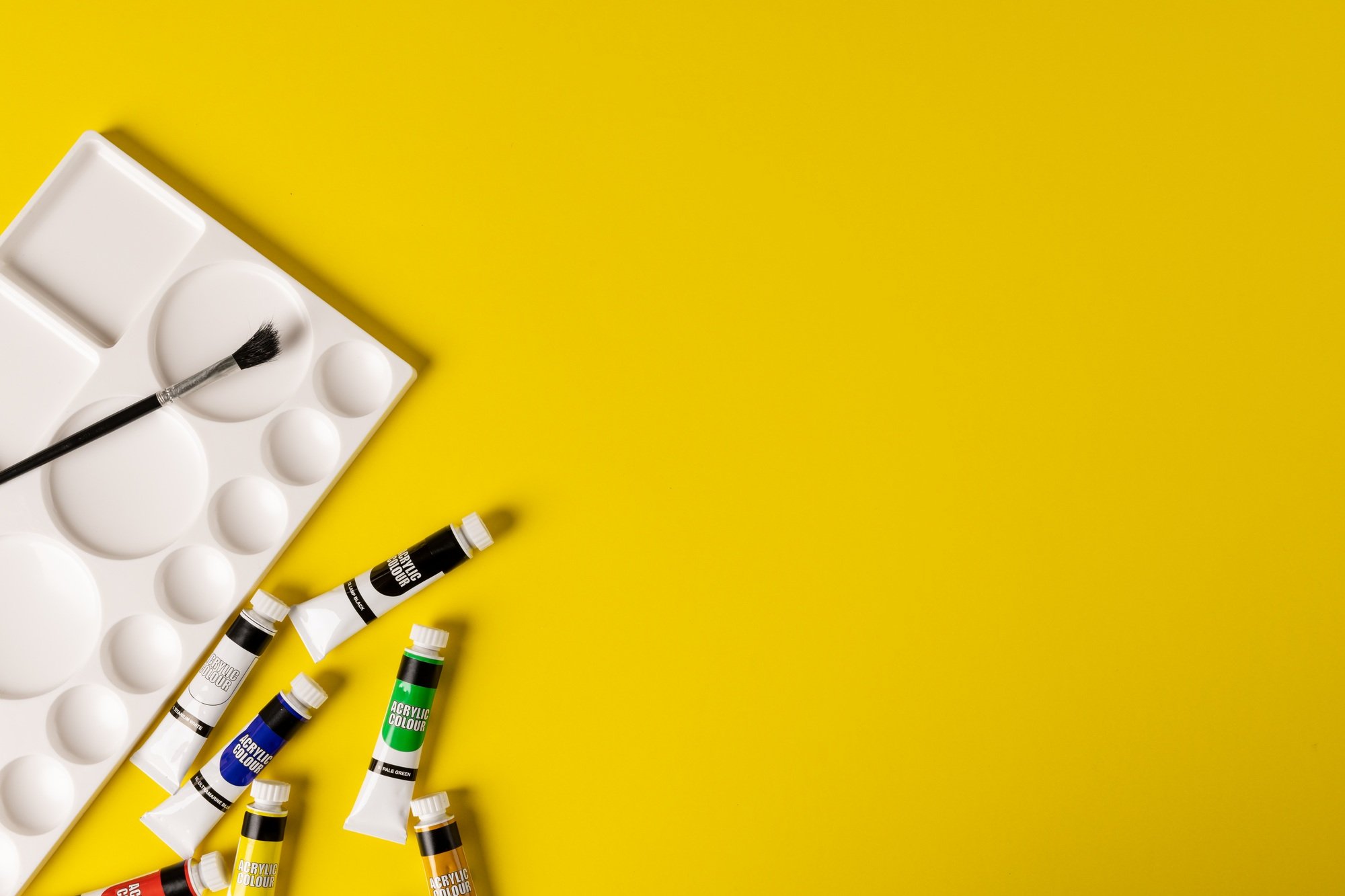
What painting supplies do I need as a beginner artist?
To get started, you’ll need essential supplies including brushes, paints, and canvases. A basic set of brushes (like flat and round), a selection of beginner-friendly acrylic or watercolor paints, and pre-stretched canvases will cover most needs. Additionally, consider getting palettes, rags, and containers for cleaning your brushes.
How do I choose the right brushes for my painting style?
Selecting the right brushes depends on your technique. Flat brushes are great for broad strokes, while round brushes are perfect for detailed work. Filbert brushes combine both styles, and fan brushes are ideal for texturing. It’s wise to try different shapes to see which suits your style best.
https://www.youtube.com/watch?v=O1AfL6XrFig
Why is the quality of paint important for artists?
High-quality paint ensures better vibrancy, longevity, and consistency in your artwork. Quality paints often have superior pigmentation and binders, enhancing color depth and mixing ability. This can significantly impact the overall appeal and durability of your finished piece.
What types of canvases should I use for my paintings?
You can choose from stretched canvases, canvas panels, or wood panels based on your painting medium and technique. Stretched canvases are versatile and widely used, while canvas panels are portable and cost-effective. Wood panels offer a solid surface ideal for fine art techniques.
https://www.youtube.com/watch?v=U-fEKG6P3Q4
How can I maintain my painting equipment?
Proper care includes cleaning brushes with soap and water after each use, drying them flat, and storing them upright or in a holder. Clean rollers and sprayers thoroughly between uses to avoid clogging. Regular maintenance prolongs the life of your tools and enhances your painting results.
What factors should I consider when buying painting equipment for a small business?
Consider the purpose of each job, the types of techniques you’ll use, and the quality of the tools. Choose reliable brands known for customer support. Investing in high-quality equipment can increase durability and efficiency, leading to better results and customer satisfaction.
Can using different brush materials affect my artwork?
Yes, brush materials matter. Natural bristles (like sable) are generally better for fluid mediums, while synthetic brushes are excellent for acrylics and watercolors. Each material has different loading and application properties, so experimenting with both can lead to improved techniques and outcomes.
Image Via Envato


